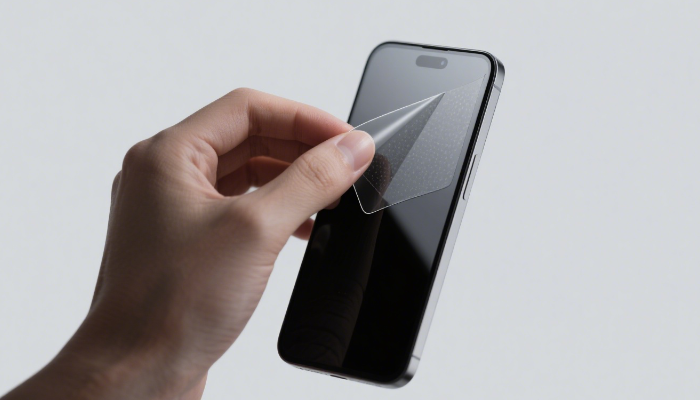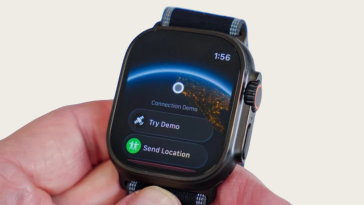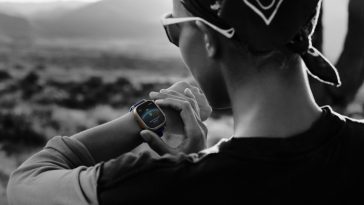When it comes to protecting your smartphone screen, choosing a screen protector with the best value for your money is essential. Many products are available, from cheap plastic films to premium tempered glass — how do you navigate through quality differences to make a wise choice? This detailed guide breaks down everything you need to know, from materials and manufacturing to key quality identification methods.
Understanding Different Types of Screen Protectors
1. Tempered Glass Protectors
Why prefer tempered glass?
Tempered glass screen protectors are widely regarded as the best all-around choice, thanks to their enhanced durability, excellent clarity, and smooth glass-like touch. Unlike plastic films, they absorb shocks and protect against scratches much more effectively.
Material composition:
Premium tempered glass is typically made from high alumina glass (high aluminum oxide content), which offers superior scratch resistance, strength, and thermal stability. This glass undergoes an intense heat treatment at approximately 650°C for several hours, followed by rapid cooling. This process increases hardness (up to 9H on the pencil scale) and impacts durability123.
Layers and design:
A quality tempered protector often comprises multiple layers:
- Oleophobic coating to repel fingerprints and oils, keeping the screen clean and smooth to the touch
- Tempered glass layer for impact and scratch resistance
- Shock-absorbing silicone layer for cushioning impact
- Optically clear adhesive for secure, bubble-free installation
Thickness usually ranges around 0.3mm to 0.5mm, balancing toughness and touch sensitivity perfectly4.
2. PET Film Protectors
Characteristics:
Polyethylene terephthalate (PET) film protectors are ultra-thin and affordable. They provide decent scratch protection and retain screen brightness well, but lack impact resistance.
Ideal for: Users needing basic scratch protection with little impact risk.
3. TPU Film Protectors
Characteristics:
Thermoplastic polyurethane (TPU) films offer flexibility and self-healing properties for minor scratches. They adhere tightly to curved screens but are more prone to yellowing and fingerprints over time.
Detailed Tips for Selecting a High Value Screen Protector
1. Material Quality and Glass Type
- Choose high alumina tempered glass over cheaper mid-alumina or regular glass for superior hardness, scratch resistance, and longevity12.
- Beware of ultra-thin or fragile glass from low-cost manufacturers, which may shatter easily and lack oleophobic coating3.
2. Thickness and Design Precision
- Typical durable tempered glass thickness is around 0.3mm, offering the best compromise between strength and screen sensitivity. Thinner protectors may be fragile; thicker ones might reduce touch responsiveness15.
- Look for “arc edge” or 2.5D/3D curved edge designs for better fit and comfort, especially with curved smartphone screens.
3. Transparency and Touch Sensitivity
- High-end tempered glass offers light transmittance over 90–95%, ensuring bright and vivid screen output without distortion24.
- A quality oleophobic coating reduces fingerprint smudges and ensures your finger glides smoothly without resistance. Rough coatings indicate inferior products.
4. Full Fit and Case Compatibility
- Full coverage protectors provide edge-to-edge protection but can sometimes lift with phone cases. “Case-friendly” protectors leave a slight margin around edges to prevent peeling when used with cases.
- Check exact dimensions, as incorrect sizing can cause bubbles or poor adhesion3.
5. Verified Brand and User Feedback
- Opt for reputable brands or manufacturers who provide good quality control, quality certificates, and customer support.
- Read user reviews—good protectors tend to report minimal issues such as bubbles, easy installation, durability, and good touch response.
How to Identify Quality in Screen Protectors — Practical Checks
| Feature | How to Check | Why Important |
|---|---|---|
| Adhesion | Apply protector and observe bubbles or edge peeling | Ensures durability and smooth touch experience |
| Hardness Rating | Confirm “9H” hardness rating; do a light scratch test with coin or key (careful!) | Resists scratches, protects display from damage |
| Oleophobic Coating | Drop water on surface—quality glass shows water beads and rolls off | Fingerprints resist easy cleaning, screen stays clear |
| Transparency | Compare screen brightness and clarity with/without protector | Maintains original display quality |
| Flexible Film Test | Bend PET/TPU films gently—good quality won’t crease permanently or crack | Indicates better build quality |
| Breaking Behavior | (If possible) check if glass breaks into small safe pieces, not dangerous shards | Safety feature in case of impact |
Recommendations for Smart Shoppers
- Balance price with quality: Very cheap protectors often lack critical features like oleophobic coating, proper hardness, or exact sizing.
- Installation kits matter: A protective film or tempered glass with an installation frame, dust remover, and squeegee helps avoid bubbles and ensures a perfect fit.
- Consider multipacks: You get backups, which reduces replacement costs if damage occurs.
- Check tempered time and QC: High-quality protectors undergo 1.5–4 hours of tempering for enhanced strength and are inspected to avoid defects like bubbles and dust inside.
Choosing the right phone screen protector doesn’t have to be overwhelming. Focus first on materials—prioritize high alumina tempered glass with solid coatings and precise production. Then consider fit, transparency, and brand reputation. Using these detailed criteria, you’ll get the best protection without overspending or regretting your purchase.
- https://www.gtelglass.com/blogs/news/exploring-the-quality-of-tempered-glass-screen-protectors-an-in-depth
- https://www.mobilephoneguard.com/the-ultimate-guide-to-choose-perfect-full-tempered-glass-screen-protector/
- https://qualityinspection.org/phone-screen-protection-inspection/
- https://www.phonearena.com/news/PET-TPU-or-Tempered-Glass–all-you-need-to-know-to-choose-a-screen-protector_id58204
- https://www.mous.co/blogs/news/what-is-the-difference-between-different-kinds-of-screen-protectors





 No products in the cart.
No products in the cart.